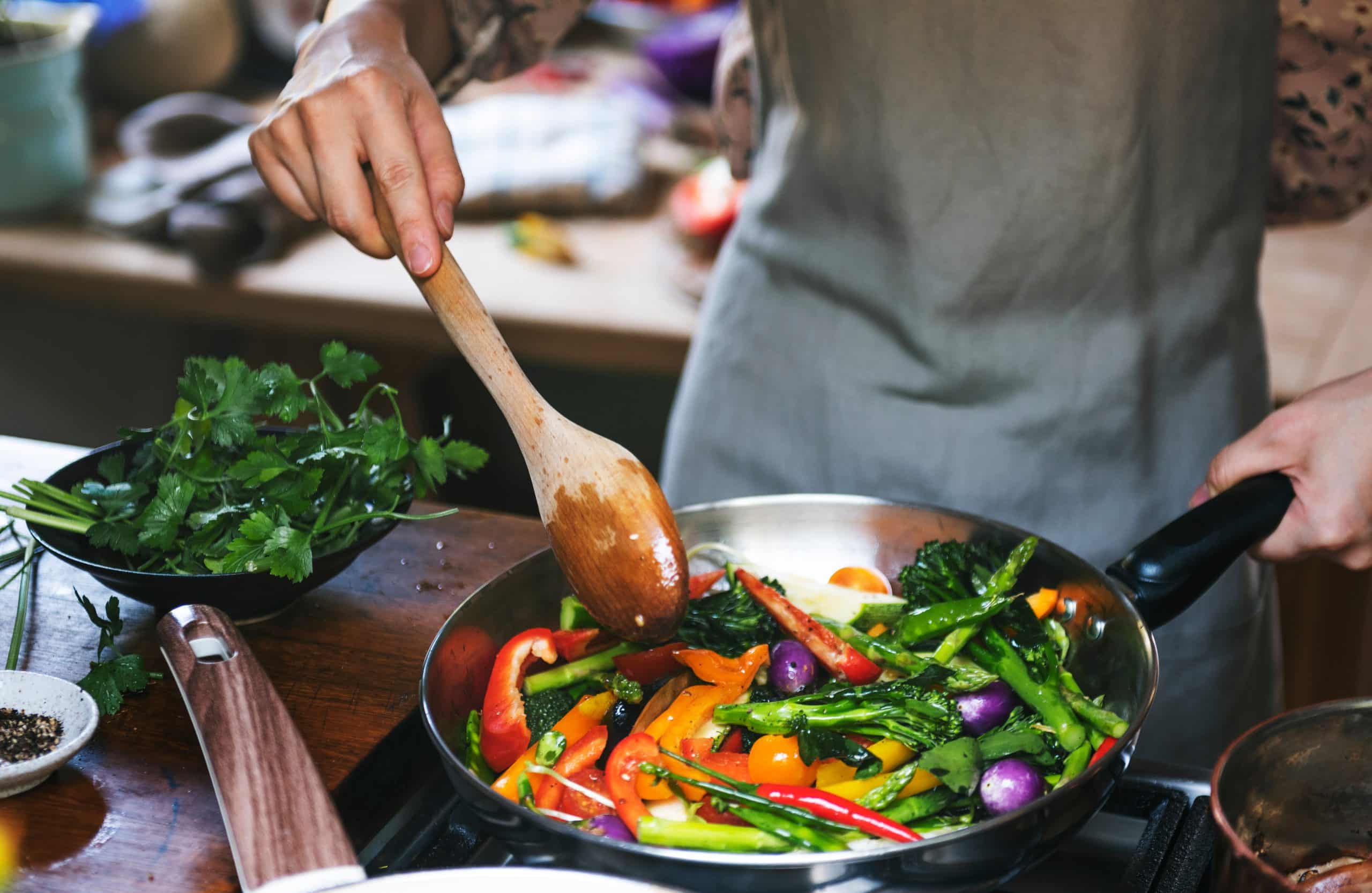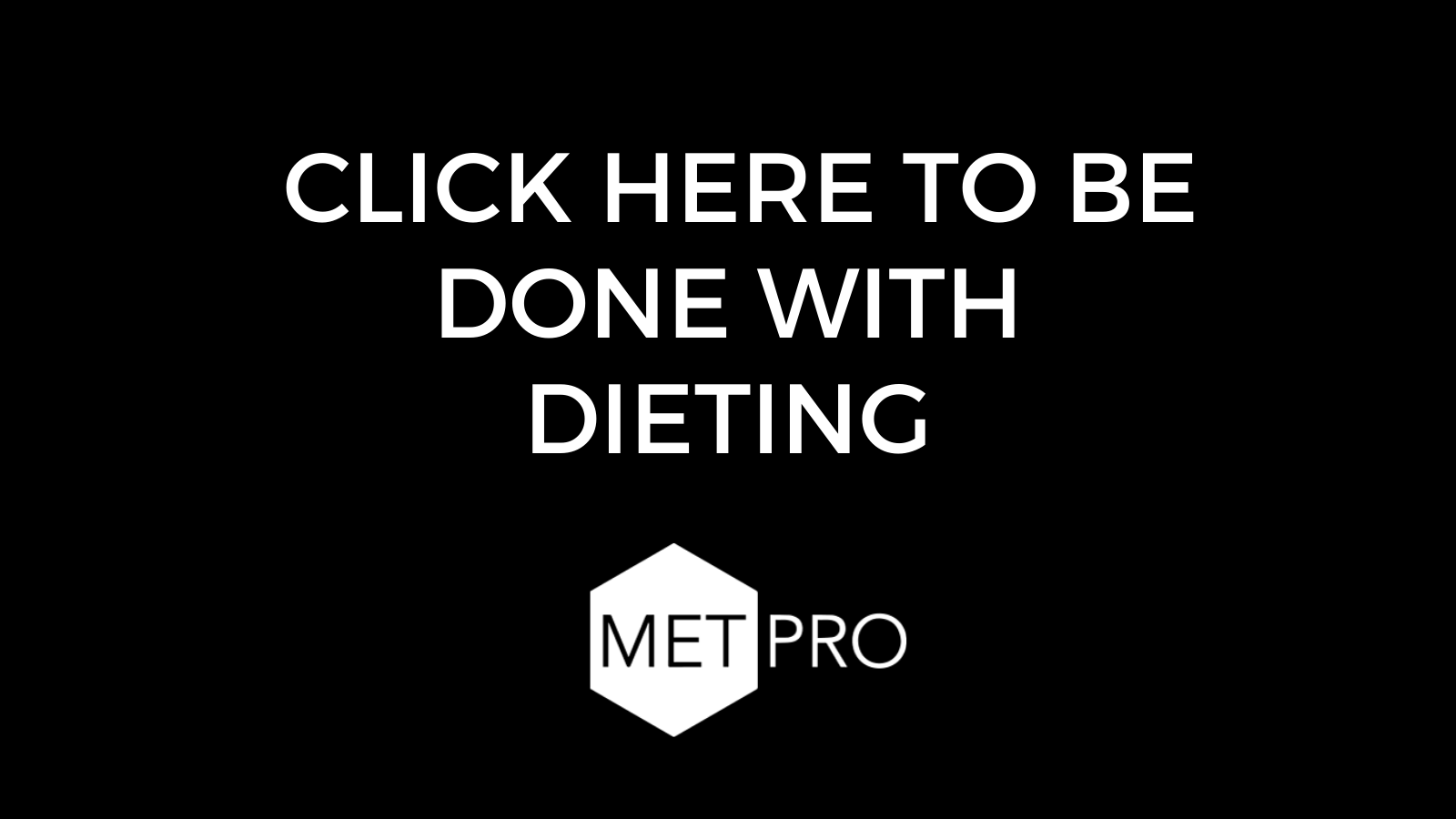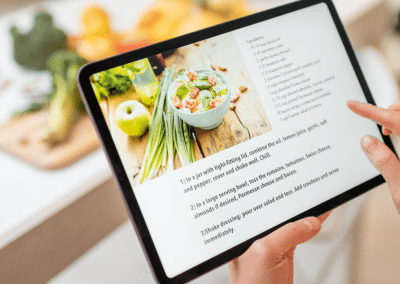Welcome to the show. I am joined by MetPro Director of Coaching, Megan Omli. We are going to be discussing Meal Planning 201. What does that mean? At MetPro, we know our clients like to get help with meal planning but everyone has a different level or skillset in cooking and planning. This episode is going to be geared toward a person who is fairly new to MetPro but who has been with us likely for many weeks.
Maybe you've cooked your whole life but you're fairly new to meal prepping. You've done the basics but you're looking forward to something a bit more complex, maybe a soup with a few ingredients to share with your family or for yourself for a couple of days. This is going to be a great place for you to start. However, if you're starting, we have another episode for you. Check out Meal Planning 101 in the meantime.
Megan, thank you so much for joining me.
Thanks for having me. I'm excited to talk about this intermediate phase of MetPro meal prepping.
I am excited about it too. I feel like even a year in, I tend to be at 101. I tend to keep my things separate.
That’s fine and amazing.
I like the simple but I want to learn to get a little more complex. Last time, we talked about prepping for the first time. Now, we're going to switch some things up. For this topic, the intermediate phase, are there different supplies that the audience should ensure that they have on hand to get started?
I talked about that food scale last time. I’m still going to talk about it again here because it’s important. I'll also mention that the food scale and understanding what your food looks like on your plate from that 101 series can help you when you're eating out. It's not going to be as simple as, “I want you eating protein from the size of your palm. I want you having this much fat with the size of your pinky.” It doesn't necessarily work like that, especially on MetPro so understanding the food scale and what it looks like on your plate will help you eat out. Your meal plan changes.
I'm big on the food scale. The second thing I would say is if you're a recipe person and that helps you take this MetPro meal prep to that intermediate level, go to AllRecipes.com. You can find thousands. I always recommend looking in your fridge. What do you have? Maybe you have sweet potatoes that are going bad. Go to AllRecipes.com and put sweet potatoes in the ingredients. It’s going to bring up 3,000 sweet potato recipes. Avoid things that have marinades or those wet ingredients but things that have dry spices are fantastic. AllRecipes.com keeps it simple and helps you use what you already have instead of having to buy a whole bunch of things that will then might go bad.
That's a great place to start. It's almost overwhelming how many recipes AllRecipes has. It's great when you can filter by ingredient.
That’s going to bring up a ton of options and for most of them, you'll be able to adapt and use in your intermediate MetPro cooking easily.
If you're looking at these recipes, how do you know what is a good recipe to try? Are there any telltale signs that you can look for that this is a good one to try?
I get told so frequently I'm boring, my food isn't interesting or my family can't eat these things. This is a sign that you're ready for that next phase. First, think about the recipes that you used to love. What were things that you used to create? Then, think about how you might do that now. I’m not necessarily talking about your mom's lasagna.
That's probably going to be phase three or a more advanced level. I'm talking about things like tacos, spaghetti or cauliflower pizza. Those are items where you are still starting and weighing separately but creating something at the end. That’s the key there.
When you’re looking at a recipe, are you still keeping the items separate before you bring them together?
Think of tacos. You're cooking the ground meat separately. Maybe you're adding some onion in there. That’s great but don't forget. If you are cooking for yourself, in this instance and doing something like that and you're prepping it for 3 or 4 days, make sure that you're also doubling or tripling that onion that you're adding so then when you're dividing, it's all there.
If you do sprinkling, don't count it. It's going to be okay. You've got that ground beef, the cheese, maybe the avocado, the lettuce that also goes in it and then the corn tortilla. Those things are also separate as you start but then when you put it on your plate, you've got your 2, 4, 6 or 8 corn tortillas, depending on who you are. On MetPro, it is possible to have 8 corn tortillas at 1 serving, which is a lot. You would put your ground meat in so then you might measure it and say, “Where are my 4 ounces?” Sprinkle that between 4 four or 6 six, whatever it might be. You might measure your cheese and then put it on.
You're still measuring it but bringing it together to create something. You could also do spaghetti. You're measuring that noodle. Maybe you've created a homemade sauce using a tomato paste or a canned tomato. That’s great. You've also added a whole bunch of herbs and spices, which is doable. You then put your veggies and pasta into that to then create something but you've measured each thing separately.
When we talked in the last episode, you wanted us to focus on knowing those serving sizes. Is there a different skill that we need to focus on for this intermediate level?
Not per se because you still need to be measuring at home. If you're probably 2 or 3 weeks in, you still need to be measuring those items at home, especially because you've probably gone through 1 phase change or 2. You're visualizing things a little bit differently. You're getting the hang of what that 1/3 cup of brown rice looks like or that 2/3 cup compared to the 3 ounces of sweet potato.
You've got a bagel or a whole wheat tortilla. There are lots of different things. I wouldn't say there's a skill but you've got in your brain what one serving of your options is. That’s in the back of your head. You're not having to think about that every single moment so you can conquer this new thing of, “What can I create and put together?”
It takes something out of the equation of difficulty.
Exactly, which leads to less frustration because you've learned it and you don't have to keep learning it every time. I can't tell you how often people are like, “My family won't eat these things.” I'm like, “Your family doesn't like tacos or even a mac and cheese?” People are like, “How can I do it?” I'm like, “You get pasta, cheese, oil and make your little cheese sauce. It’s possible.” This is that point where you can go, “I can create a little bit more,” but in those first two weeks, you might find yourself prepping two different items for everyone. You’re out of luck if your kids only eat chicken dinos and strawberries.
Do you have a favorite example of a slightly more complex meal on MetPro and what it might consist of?
My favorite complex meal or more advanced meal would be a three-bean chili or a casserole that you take and adapt for a potluck. In this instance, you’re measuring those items and then cooking them but then also, you’re probably having to realize, “I have this many beans that count for part of my carbs and protein. How do I get those things to match?” That would be more complex. We’ll get there. You’re not quite on three-ish weeks yet but soon.
Is there anything else that the audience should know to be prepared for this level of food creation that we're talking about?
As you feel more comfortable or as you start to think, “What are dinners this week?” As you start realizing, “I'm thinking of sweet potato, quinoa, brown rice, whole wheat tortilla and corn tortilla.” If those are popping into your mind relatively easy and you're like, “I can use these things,” then you're probably ready to start creating a little bit more.
If you're still in that app and are like, “What are my options again? How many meal carbs do I need here,” probably stay in that one-on-one or more beginner phase but as you're getting more comfortable with understanding where macros fit, you can probably progress it a little bit. I’m using meal carbs as my primary example. We incorporate almost any type of protein and fat you can think of. I always use those carbohydrates as my example for getting more complicated.
I like the carbs. You mentioned pasta. There are so many different kinds of pasta that you can buy. They also have protein in them sometimes so it can condense a cup. If you're having quite a few carbs in your plan, you can get a whole cup of pasta, which sounds like a lot. That’s a lot of food. Megan, thank you so much for your time. Would you like to give people your email address so they can reach out to you if they have any questions?
It’s Megan@MetPro.co.
Readers, that’s all for this episode. Please be sure to follow the show, rate and review because that lets other people know what they can expect. You can also learn more about MetPro at MetPro.co. Until then. Remember, consistency is key.






